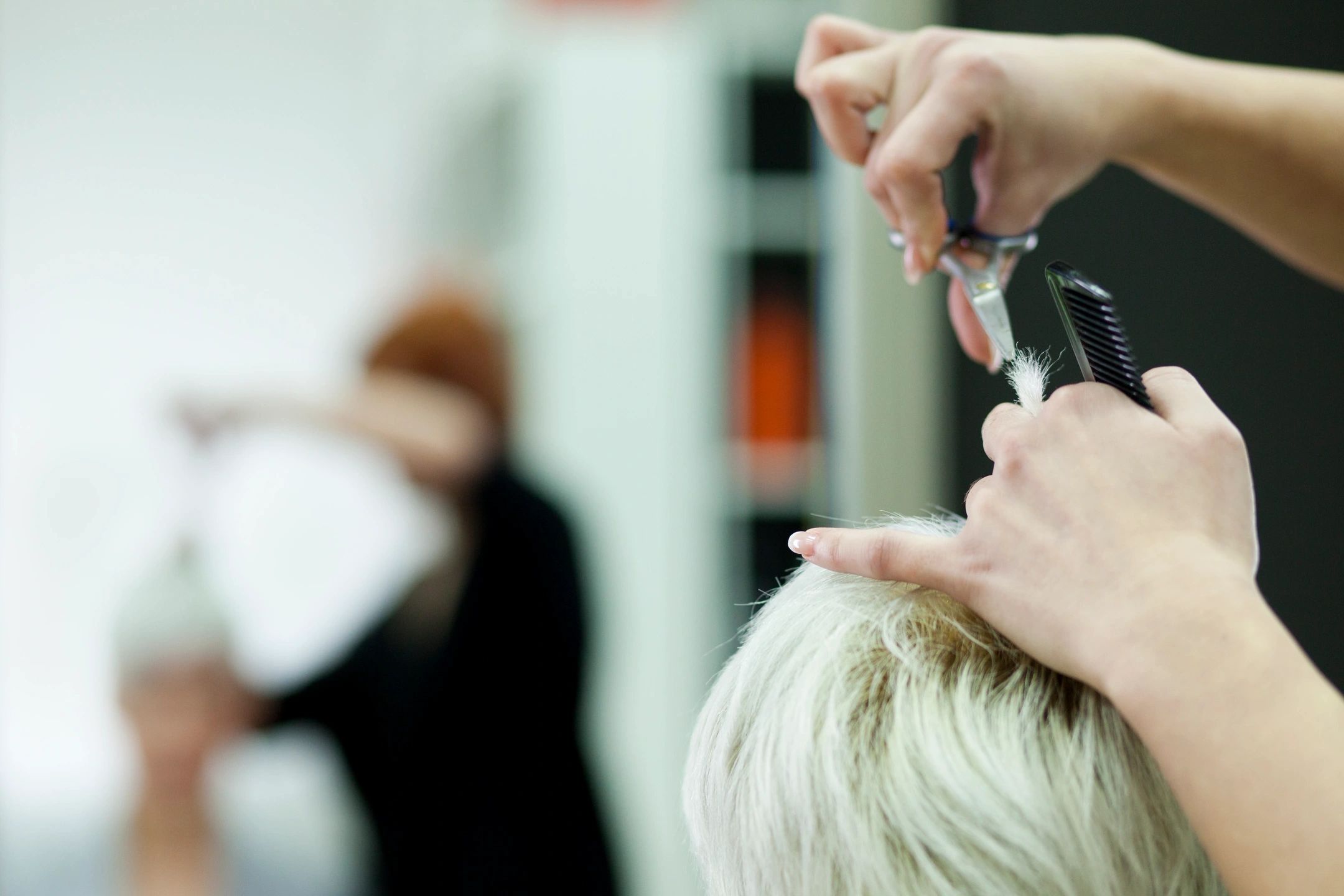I was 14 when I discovered the joy of coloring my hair. It was the 80s, and I spent my summer days baking in the sun, my hair drenched in Sun-In and my skin slathered with baby oil. By the end of that summer, I felt pretty for the first time, with my hair and skin both golden brown.
A couple of years later, in honor of my junior prom, my mother allowed me to get my first salon highlights. Seeing the transformation from boring brown to beachy blonde, I was hooked. From my teenage years on, every six to eight weeks without fail, I colored my hair. My husband of twenty-five years had never even seen my natural color.
Except for a two-year stint as a redhead (and I mean Reba McEntire red), I always dyed my hair a warm, honey brown with blonde highlights. By my late 30s, the top of my head was 80% gray, and I feared being caught in public with my gray roots showing. I even touched up my roots myself every three weeks between salon appointments.
Thousands of hours and dollars later, I decided to stop being held captive by my hair.
For years, I had considered stopping coloring in honor of turning 50. In December of the year, I turned 49, I decided not to wait any longer. I said, “Enough!”
I was tired of the hours in the salon chair and spending $100-$200 every eight weeks. I was tired of being afraid to attend events like my husband’s work Christmas party when I was overdue for a color. I was in a busy season of life with an ailing parent, one child in college, two in high school, and a job that I mostly loved. Why was I letting my hair maintenance take up so much of my life? Why was I so worried about what people thought? And what message was I sending my two teenage daughters?
So, I stopped—cold turkey. I canceled my much-needed coloring appointment and began my journey to becoming a salt-and-pepper badass.
For the next two years, I avoided hair color, survived a pandemic, and learned a few lessons.
Going gray is trending. There are several accounts on Instagram of gray-haired influencers. Facebook has entire communities related to going gray. The movement has its hashtag: #goinggraygracefully. If you are considering going gray, check out the Facebook group Going Gray & Lovin’ It or Instagram’s many gray-positive accounts.
Breaking a societal expectation is empowering. Stopping coloring my hair felt like giving the middle finger to societal norms. I felt empowered by embracing my natural grays because society doesn’t get to tell me how I should look.
Going gray requires stubbornness. Early in my transition to gray, my teenage daughter told me she didn’t think I’d go through with it. Challenge accepted. At times, when I had second thoughts, I would remember what she said. She thought my vanity would outweigh my stubbornness. It did not. Tell me I can’t do something, and watch me do it.
Growing out of your gray takes forever, and results may vary. Unless you shave your head or get a pixie cut, it takes 18 months to two years to grow out your gray. Those gray roots peeking through two or three weeks after a color make it seem like hair grows fast, but it grows out incredibly slowly. It has awkward phases. I was lucky that my hair was already a light blonde, so my transition wasn’t as skunk-like as darker-haired ladies. However, I was quite surprised at the color of my natural hair. I was hoping for a cool, steely gray. When it grew in, it was bright white. All salt and no pepper.
One of the hardest lessons I learned through the process is that I’m not as confident as I thought. The trouble started when I began a new job about a year into my transition to gray. With my head full of gray hair, people assumed I was much older than 50 years. It felt like people reacted differently to me as a gray-haired lady. Little by little, my hair color and confidence faded, and I no longer recognized the woman in the mirror. It was even worse in photos taken in bright sunlight, such as on trips to the beach. When I saw a picture of myself at the beach that year, I initially thought, “Who is that white-haired lady?” only to realize I was the white-haired lady. I spent more time and money on makeup because I looked completely exhausted and washed out without it. (My eyelashes and eyebrows have also turned white.)
The last lesson I learned is that returning to hair color is not shameful if that makes you happy. After one year and 11 months, I had fully transitioned to my natural hair color, but I wouldn’t say I liked the result. The Facebook and Instagram pages hadn’t prepared me for that possibility. So, a few days after my 51st birthday, I went to the salon for some lowlights to balance out the white, and I was really happy with the result. As I left the salon, I glimpsed in the rearview mirror, and I liked how I looked for the first time in a long time.
When I started coloring my hair again, a funny thing happened. No one outside of my immediate family even noticed. I felt like I was making such a statement with my grays, but I wasn’t. That may be the best lesson: most people don’t care what you do with your hair, so do what makes you feel good about yourself.


Leave a Reply